It was during May-June 2022, I went for the Everest Base Camp (EBC) trek. Now, I’m more of a roadrunner than a trekker, and I had never been to higher-altitude treks such as EBC. I had, therefore, a lot of doubts in my mind. Nonetheless, I set out for the trek. I was fortunate to have Dammru Niraula as my guide. As we progressed through the trek, I was so amazed by his vast knowledge of the terrain and associated history. What really made my trek memorable that Dammru was around all the time whenever I needed any kind of help. He wears a calm demeanor, is superbly knowledgeable, and knows the wonderful trek like the back of his palm. On my way back from EBC to Gorakshep, I had lost all my steam and was not able to even walk. Dammru’s experience and patience ensured that I was back at Gorakshep safe and healthy. Just imagine: I climbed to Kala Pathhar the next day without a hint of the problem I had faced a day ago, with amazing Dammru by my side. If you happen to be or wish to be on that side of the magnificent world, don’t forget to reach out to Dammru Niraula (email id dammaruniraula@gmail.com; http://www.himalayanrealmstrek.com; nepalfreelanceguide.com) – Happy HAT ( High Altitude Trekking). http://www.himalayanrealmstrek.com/ Gokyo trek 14 days

Trip overview
Everest-Base-Camp-Trek, 12 days
The Everest Base Camp Trek is one of Nepal’s most famous trekking routes, offering stunning views of Mount Everest (8,848.86 m) and the surrounding peaks. The trek takes you through the heart of the Khumbu region, rich in Sherpa culture, breathtaking landscapes, and high-altitude adventure.
Everest Base Camp Trek in Nepal
The trek to EBC is an once-in-a-lifetime journey that follows the footsteps of legendary mountaineers like Sir Edmund Hillary and Tenzin Norgay Sherpa. Located in Sagarmatha National Park, EBC sits at an altitude of 5,364m (17,598 ft).
Everest Base Camp Trek Itinerary
The journey begins from Kathmandu with the scenic flight to lukla. The usual flight time to Lukla from Kathmandu takes around 45 minutes. During the flight trekkers can capture the stunning views of the mountain, lower Everest region and scenic formation of the cloud often disturbing the flights to Lukla. As you land in the Lukla the cold fresh air welcomes you, the short runway goose the vibes and that scenic views capture the mind of every travelers. As upon the landing trek leads to Phakding with 4 hours of walk gently and over night stay in the hotel. Similarly the next day begins for the Namche bazar with includes the rest day and exploring the valley and acclimatization for the higher altitude.
Fourth day explore one of the famous Tengboche monastry and get the scenic sunrise and sunset. Another acclimatization day is well prepared in Dingboche to get adjust with the altitude and the surrounding environment. The last stop of the 12 days trek takes in Gorek Shep and on the same day explore the base camp and head to the Kalapathar next morning for the sunrise views. After reaching your final destination, you will make your way back following a similar route, retracing your steps through the breathtaking Himalayan landscapes.
Everest Base Camp Trek Distance
The total trek distance is 130 km (81 miles), with an average of 10–15 km of hiking per day. The Lukla to Everest Base Camp trek distance is around 65 km.
Everest Base Camp Trek Cost
The cost of the EBC trek depends on the type of package, group size, and services included. For the solo traveler the cost is $2165 and for 2-5 person the trip cost leads to $1525. But the group size extending more than 6 person cost leads to $1390. The service included in the package cost are transportation, accommodation, paper work, guide and porter, and flight service etc. The service excluded are international fair, extra days cost in Kathmandu, rescue and travel insurance etc.
Everest Base Camp Trek Package
There are several EBC trek packages available, including:
- Standard EBC Trek (12–14 days)
- Luxury EBC Trek (Stay in high-end lodges like Yeti Mountain Home)
- EBC Private Trek (Customized itinerary, private guide, and porter)
- Short trek to EBC trek
Everest Base Camp Trek Map
Everest Base Camp Trek Difficulty
- Level: Moderate to Challenging
- Main Challenges:
- Altitude sickness (Above 3,500m)
- Cold temperatures (-10°C to -20°C at night)
- Steep ascents and descents
Long trekking days (5–7hrs per day).
Best Boots for Everest Base Camp Trek
Recommended Trekking Boots:
Salomon Quest 4 GTX – Lightweight & waterproof
La Sportiva Trango TRK GTX – High-altitude trekking
Scarpa Zodiac Plus GTX – Excellent ankle support.
Break-in your boots before the trek to avoid blisters!
Everest Base Camp Trek Packing List
Packing light but effectively is key to a successful trek. Also a porter carries up to 25 kg so it is crucial to follow the weight of the bag pack. The important packing list includes:
Clothing
Base Layers: Moisture-wicking thermals (top & bottom).
Mid Layers: Fleece jacket, insulated down jacket.
Outer Layers: Waterproof & windproof jacket/pants.
Trekking Pants & Shirts: Lightweight, quick-dry.
Gloves: Inner and outer insulated gloves.
Hat & Neck Gaiter: Protect from cold and wind.
Socks: Wool socks (4-5 pairs).
Footwear
Trekking Boots: Waterproof, ankle support, well broken-in.
Camp Shoes: Sandals or lightweight shoes for evenings.
Gear & Equipment
Backpack (30-40L): For daily essentials.
Sleeping Bag (-10°C to -20°C): Essential for cold nights.
Trekking Poles: Reduce knee strain on descents.
Headlamp & Extra Batteries: Useful in dark lodges.
Water Bottles & Purification Tablets: Drink 3-4L per day.
Sunglasses & Sunscreen: High UV exposure in the mountains.
First Aid & Personal Items
- Diamox (for altitude sickness prevention).
- Painkillers, band-aids, antiseptic cream.
- Lip balm, moisturizer, baby wipes.
- Snacks (energy bars, nuts, chocolates).
Preparation for the Everest base camp 12 days trek
Since the trek involves long hiking days, steep ascents, and high altitude, you need good endurance and strength. Cardio & Endurance Training (3–4 months before the trek) this includes:
Hiking practice: Start with 5–7 km hikes on uneven terrain. Gradually increase to 15 km with a backpack.
Walking with elevation gain: Train on stairs or hills (1000+ feet elevation gain per session).
Cycling, running, or swimming to build stamina (3–4 times per week).
Strength Training
Leg workouts: Squats, lunges, step-ups, and calf raises.
Core training: Planks, crunches, and leg raises for better balance.
Upper body: Shoulder and back exercises to help carry a backpack.
Altitude Training : Ideally, if you have access to a high-altitude training center, it is highly recommended to train at 3,000+ meters before the trek. This will not only help your body adapt to lower oxygen levels but also improve your endurance and overall trekking experience.
Mental Preparation
The EBC trek is mentally challenging, primarily due to the cold weather, long trekking days, and high altitude. Furthermore, the unpredictable mountain conditions and physical exhaustion can add to the difficulty. However, with proper preparation, a positive mindset, and gradual acclimatization, you can successfully overcome these challenges and fully enjoy the breathtaking journey.
Train in difficult weather conditions.
Be mentally prepared for discomfort (basic teahouses, no luxury).
Stay motivated and have a strong mindset to keep going.
Acclimatization & Altitude Sickness Prevention
Follow the 12-Day Itinerary with acclimatization Days at Namche (Day 3) & Dingboche (Day 6) is mandatory to avoid Altitude Mountain Sickness (AMS).
AMS Symptoms & Prevention
Symptoms: Headache, dizziness, nausea, trouble sleeping.
Ascend slowly (not more than 500m per day after 3,000m).
Drink 3–4 liters of water daily.
Eat carbohydrate-rich foods (dal bhat, pasta, potatoes).
Avoid alcohol and smoking.
Take Diamox (if necessary, after consulting a doctor).
Conclusion
The EBC Trek is an unforgettable adventure, offering breathtaking views, Sherpa culture, and a true Himalayan experience. Whether you choose a standard trek, luxury lodge trek, or a private trek, this journey is worth every step.
Similar Treks offered by the Himalayan Realms trek and expedition in the Everest region are:
Short Itinerary
1. Lukla → Phakding
2. Phakding → Namche Bazaar (acclimatization here)
3. Namche → Tengboche
4. Tengboche → Dingboche (acclimatization here)
5. Dingboche → Lobuche
6. Lobuche → Gorak Shep → Everest Base Camp → Gorak Shep
7. Return via the same route.
Itinerary
When you arrive at the airport, our representative will pick you up and take you to a 3-star hotel. You will rest for a while. You will get a brief introduction to Everest Base Camp Trekking. You can then spend the rest of the day shopping for your itinerary or exploring the streets of Thamel. Meals included: none
Today we explore Kathmandu with a local tour guide; The day is flexible depending on what you want to see. However, the most popular places are usually the following: Pashupatinath Temple: It is a Hindu sacred temple with burning ghats on the banks of the Bagmati River. Swayambhunath, also known as the Monkey Temple, is climbed up a long set of stairs and offers a spectacular view of Kathmandu. Boudhanath Stupa has many traditional gompas with colorful prayer flags hanging from it. This stupa attracts many Sherpas and Tibetans for the ring (chorus). The Kathmandu Durbar Square, one of the ancient palaces of the Kathmandu Valley, offers a mix of Hindu and Buddhist temples.
After completing the flight to Lukla, your trekking tour begins in Lukla. You walk for about 3 hours along the Doodh Koshi River to reach Phakding, where you will spend the night. Meals included: Breakfast, lunch and dinner
On the third day of your trek to Everest Base Camp, have breakfast at Phakding and proceed to Namche Bazaar. On the way you can catch the first glimpse of Mount Everest. You will find many shippers carrying goods from Namche Bazaar. On the way you will see mountains like Kusum-Kanguru, Thamserku etc. You will pass through pine and rhododendron forests along the banks of Dudh Koshi river. After lunch and relaxation at Monjo, proceed to Namche Bazaar. You cross several suspension bridges and steep stairs to reach Namche Bazaar. You will be able to see Mount Everest, Mount Lhotse and Taweche from Namche. Meals included: Breakfast, lunch and dinner
When you reach Namche, you cross the 3000m mark which puts you at risk of altitude sickness. It takes some time for our body to adapt to this rapidly changing altitude and falling temperature. So, stay at Namche Bazaar for a day and reduce the risk of altitude sickness. On this day, you can take a short walk to the Everest View Hotel to watch the sunrise over Everest. You can also enjoy the sunrise and sunset in the panorama of the Himalayas from Sagarmatha National Park Headquarters. You can also stop by at Namche Bazaar and explore the Sherpa lifestyle and culture. Meals included: Breakfast, lunch and dinner
On this day you will travel on foot through almost flat terrain on the banks of Dudh Koshi river. You'll walk through pine forests and cross several suspension bridges. Walk on a gentle slope for the first few hours and then uphill for the rest of the day. A spectacular view of Ama Dablam and Mount Everest awaits you on the way. You reach Tengboche, where you can visit Tengboche Monastery. You will spend the night at the Tea House in Tengboche. Meals included: Breakfast, lunch and dinner
You have breakfast early in the morning at Tengboche and walk to Dingboche. As you walk, the mountain range gets closer and closer. On their sixth day, you will walk through pine forests and Sherpa villages to reach Dingboche. Along the way, you'll pass a few communities including Pangboche and Somare, where you can enjoy a beautiful view of Mount Ama Dablam. You can see barley fields, potato fields and stone walls built to protect crops from strong winds. You cannot see Everest on the way. However, you get to have a great view of Mt Lhotse, Mt Nuptse etc. You will get a chance to witness spectacular sunset and sunrise over the mountains. Meals included: Breakfast, lunch, and dinner
Take a second acclimatization break on the seventh day of your trekking trip. You can stay in the village, explore or walk around things. You can explore the Sherpa people and lifestyle. You can visit Dingboche Monastery or take a short walk to Amadabalam Base Camp, Nagarjuna Hill, or Chukung Ri. Meals included: Breakfast, lunch and dinner
On this day you climb the crest behind the Dingboche village. The path is a bit steep. However, the moving look at the Himalayas around you will motivate you to move forward. You can see Lobuche Peak in the north. After a few hours' walk, the path becomes flatter. You cross the Khumbu Glacier and the moraine. In the next few hours, you will climb through the valleys of Morena. You can see the memorial stone pile built into the memories of deceased Sherpas and other hikers. You can get the fascinating view of the mount Pumori, Lingtren, Khumbuste, etc.
Meals included: Breakfast, lunch, and dinner
The day will be full of excitement as you climb Everest Base Camp. Early in the morning, you walk along rocky moraine trails to Gorak Shep. After walking for 3 hours you will reach Gorak Shep and have lunch there. After resting for a while, depart for Everest Base Camp. During the expedition season, you can meet some climbers and porters at Everest Base Camp. You cannot see the top of Everest from Base Camp. However, from there you can see snow, glaciers and other nearby peaks. After spending several times there, Gorak returned to Shep and spent the night. Meals included: Breakfast, lunch and dinner
The sunrise over the Himalayas is mesmerizing, so wake up early and walk to Kalapathar to watch the sunrise over Mount Everest. Kala Patthar is an outstanding site at the foot of Mount Everest. From there you also have a spectacular view of the Khumbu Glacier and other nearby peaks of Mount Everest etc. After spending some time at Kalapathar, get down at Gorak Shep and have lunch. Then get off the ferry and explore the new route. Meals included: Breakfast, lunch and dinner
Have an early breakfast at Pheriche and leave for Namche Bazaar. As soon as you get down at Namche, you can enjoy the panorama of the Himalayas. The route passes through forests of rhododendron, deodar and oak, where you will find musk deer, Himalayan tar, snow leopard etc. You can meet hikers returning from Lake Gokyo and share your trekking experiences along the way. After walking for a few hours you reach Namche and rest in a tea house. Meals included: Breakfast, lunch and dinner
After having breakfast at Namche and walk to Lukla. You will spend this day in Lukla and celebrate the success of your journey. You can take bath, have drinks, walk around the city and taste different food items. You can also visit the school founded by Sir Edmund Hillary. On this day you say goodbye to your coolies. Meals included: Breakfast, lunch and dinner
You take an early morning flight to Kathmandu. However, there is always a possibility of your flight getting delayed as the weather conditions in the Lukla region are unpredictable. When you return to Kathmandu, you can explore the nearby restaurants and cafes. You can head to the bar and spa or just stay back at your hotel and relax. Meals included: Breakfast
After breakfast, our representative will pick you up at the airport with the hope of meeting you again in the future Meals included: Breakfast
Included
- All airport, hotel airport transfers.
- 2-night hotel in Kathmandu.
- National Park permit & Pasang Lhambu village entry permit.
- Flight fare from Kathmandu-Lukla-Kathmandu.
- Accommodation in the tea house,
- Food, Tea/coffee during trek.
- Guide: – including salary, insurance, equipment, flight, food and lodging.
- Porter: – including salary, insurance, equipment, food and lodging.
- For guest: -Down jacket, Good sleeping bag (down jacket and sleeping bag are to be returned after trip completion).
- Transfer from airport to hotel in Kathmandu
- All government and local taxes.
- Final departure from hotel to international airport transfer.
Not Included
- Food in Kathmandu ( Lunch & Dinner).
- Extra night accommodation in Kathmandu.
- Travel and rescue insurance if guest get mountain sickness and need to rescue helicopter.
- Personal expenses example (phone calls, laundry service , bar bills, battery recharge, WIFI charge, extra porters, bottle water or boiled water, shower etc.)
- Tips for guide and porters
- Sightseeing sport fees. tours guide cost and vechicle cost
Join Us Upcoming Trips
Book this trip with us. Here are the upcoming dates. Feel free to share this trip with your friends and family. For custom trips or general inquiries contact us.
| Departure Date | Trip Duration | Price | Status | |
|---|---|---|---|---|
| 12 October, 0025 | 12 Days | $2165 | Fixed departure | |
| 15 October, 2025 | 12 Days | $2165 | Fixed departure | |
| 28 October, 2025 | 12 Days | $2165 | Fixed departure | |
| 10 November, 2025 | 12 Days | $2165 | Fixed departure | |
| 22 November, 2025 | 12 Days | $2165 | Fixed departure | |
| 05 December, 2025 | 12 Days | $2165 | Fixed departure |
Useful Info
Everest Base Camp (EBC) is one of the most popular trekking destinations in the world, offering breathtaking views and a glimpse of the majestic Himalayas. Here’s some useful information if you’re planning a trip:
Location
Altitude: 5,364 meters (17,598 feet) above sea level.
Region: Solu-Khumbu, Nepal, in the Sagarmatha National Park
Best Time to Visit
Spring (March-May): Clear skies, warm weather, blooming rhododendrons.
Autumn (September-November): Crisp air, stable weather, stunning views.
Avoid the monsoon season (June-August) due to rain and potential landslides and the harsh winter (December-February) unless you’re experienced with high-altitude trekking in extreme cold.
How to Get There
Flight: Fly from Kathmandu to Lukla (the gateway to the trek).
Trek: The trek from Lukla to EBC usually takes 12–14 days, including acclimatization stops.
Permit Requirements
Sagarmatha National Park Permit: For entering the park.
Local Area Permit (Khumbu Pasang Lhamu Rural Municipality Permit): Required for the region. These can be obtained in Kathmandu or Monjo on the way.
Physical Preparation
Fitness: A moderate to high level of fitness is required. Acclimatization: Take rest days to prevent altitude sickness. Training Tips: Cardio, strength training, and hiking practice with a backpack.
Packing Essentials
Clothing: Layered clothing for varying temperatures (base layers, fleece, down jacket, waterproof outer layer). Gear: sturdy trekking boots, trekking poles, a sleeping bag (rated for -10°C or lower), and a daypack. Accessories: Sunglasses, sunscreen, a headlamp, and a reusable water bottle with purification tablets or a filter.
Snacks & Medications: High-energy snacks, Diamox (for altitude sickness), basic first-aid kit
Accommodation & Food
Teahouses: Basic lodges offering simple meals and shared rooms.
Food: Dal Bhat (rice and lentils), noodles, momos, and tea are common
Health & Safety
Altitude Sickness: Stay hydrated, ascend gradually, and know the symptoms.
Emergency: Insurance that covers helicopter evacuation is strongly recommended.
Quick Checklist:
Weather: Be prepared for rapidly changing conditions
Highlights of the Trek
Namche Bazaar: A vibrant Sherpa town and acclimatization spot.
Tengboche Monastery: Spiritual hub with stunning mountain views.
Kala Patthar: A viewpoint offering a closer view of Mount Everest.
Khumbu Glacier: Majestic glacial landscapes en route to EBC.
Quick Checklist
- ✅ Permits in hand.
- ✅ Gear packed and tested.
- ✅ Fitness level adequate.
- ✅ Insurance and emergency contacts ready.
FAQs
-
1. How long does it take to trek to Everest Base Camp?
The standard EBC trek takes 12 days, including 8 days to reach Base Camp and 4 days to descend.
-
How difficult is the Everest Base Camp trek?
The EBC trek is moderately difficult, requiring good physical fitness and stamina
-
How much does the Everest Base Camp trek cost?
The cost varies based on your trekking style: Budget trek, Standard trek and Luxury trek.
-
Is there WiFi, electricity, and mobile network on the trek?
WiFi: ($5–$10 per use), Mobile Network: NTC & Everest Link, weak at higher altitudes and Electricity: Charging costs $2–$5 per hour in teahouses.
-
Do I need to tip my guide and porter?
Yes
Trip Reviews
Comments are closed.
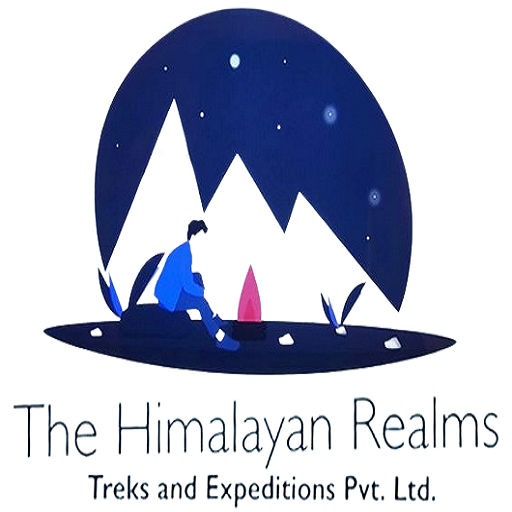


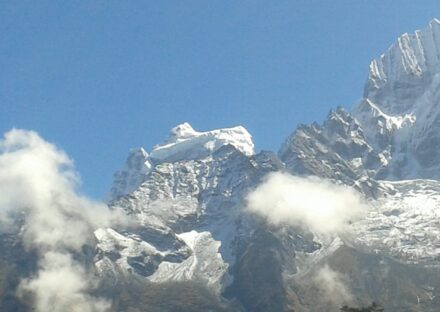
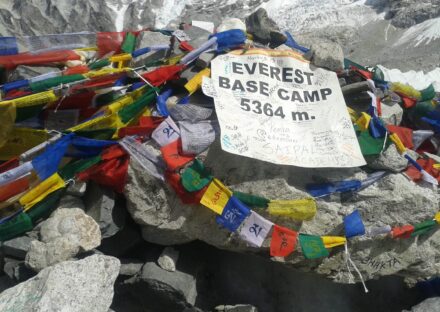
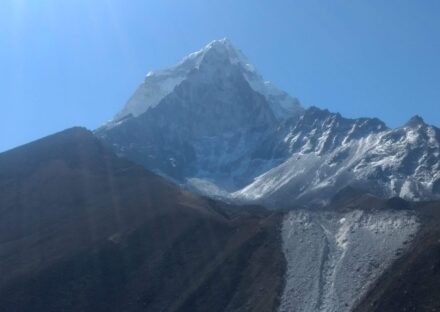
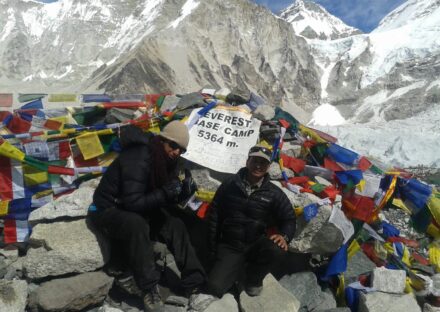
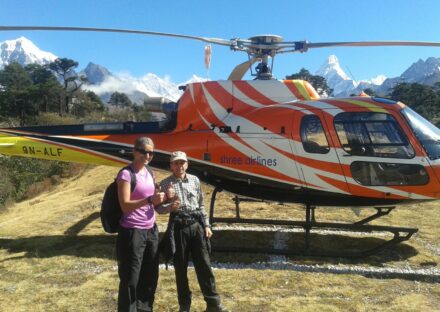

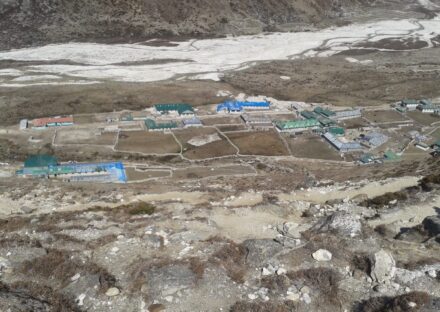
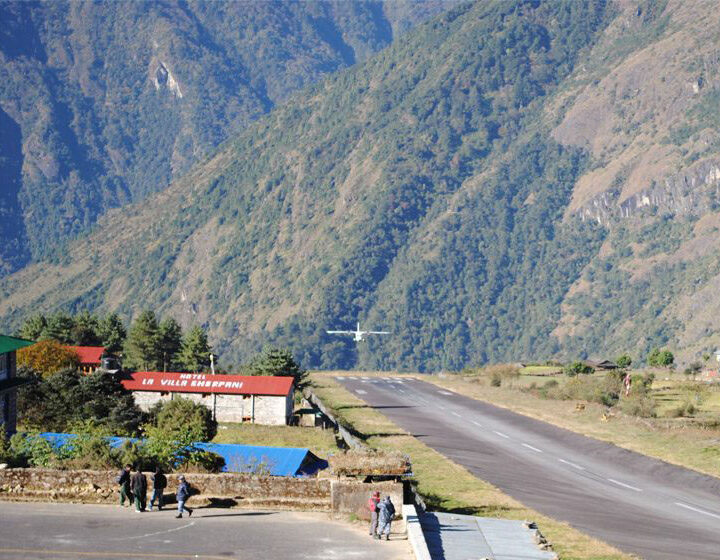
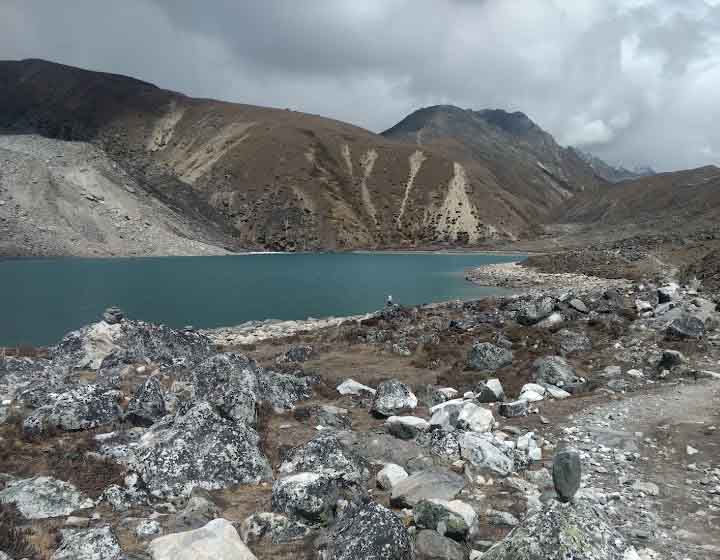
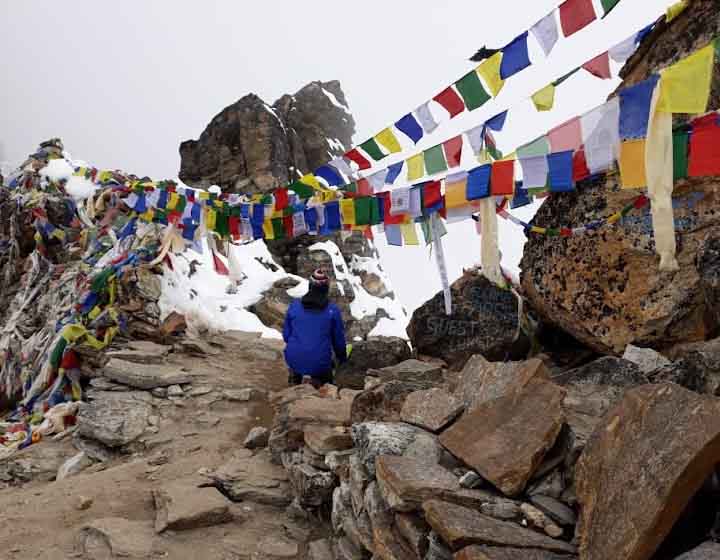
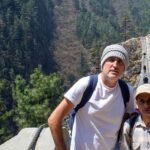
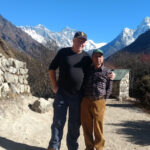
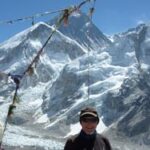
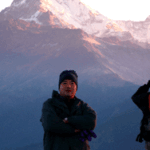
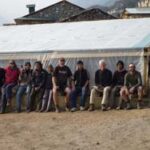
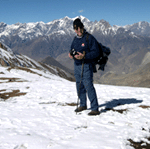

dammaru@2026
It was during May-June 2022, I went for the Everest Base Camp (EBC) trek. Now, I’m more of a roadrunner than a trekker, and I had never been to higher-altitude treks such as EBC. I had, therefore, a lot of doubts in my mind. Nonetheless, I set out for the trek. I was fortunate to have Dammru Niraula as my guide. As we progressed through the trek, I was so amazed by his vast knowledge of the terrain and associated history. What really made my trek memorable that Dammru was around all the time whenever I needed any kind of help. He wears a calm demeanor, is superbly knowledgeable, and knows the wonderful trek like the back of his palm. On my way back from EBC to Gorakshep, I had lost all my steam and was not able to even walk. Dammru’s experience and patience ensured that I was back at Gorakshep safe and healthy. Just imagine: I climbed to Kala Pathhar the next day without a hint of the problem I had faced a day ago, with amazing Dammru by my side. If you happen to be or wish to be on that side of the magnificent world, don’t forget to reach out to Dammru Niraula (email id dammaruniraula@gmail.com; http://www.himalayanrealmstrek.com; nepalfreelanceguide.com) – Happy HAT ( High Altitude Trekking). http://www.himalayanrealmstrek.com/ Gokyo trek 14 days